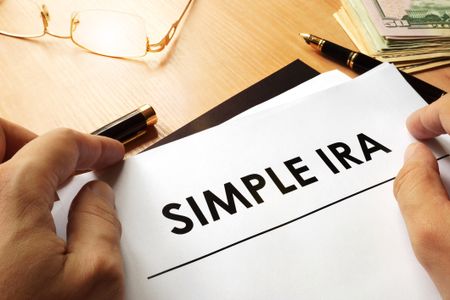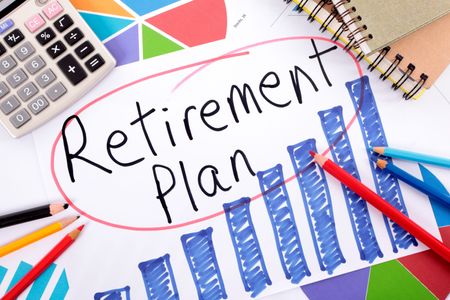Build an Emergency Fund or Invest for Retirement?
Our reader has the enviable problem of saving so much he doesn't know what to do with it all. We help him prioritize.
OUR READER
Who: Ian MacKinnon, 26
Where: Philadelphia

Sign up for Kiplinger’s Free E-Newsletters
Profit and prosper with the best of expert advice on investing, taxes, retirement, personal finance and more - straight to your e-mail.
Profit and prosper with the best of expert advice - straight to your e-mail.
Question: What should I do with the $25,000 in my savings account?
Four years after landing an engineering job with Sunoco, Ian, 26, is eager to make his savings work for him. By living frugally, the former college athlete has kept himself in solid fiscal shape. He's paid off his student loans and amassed $25,000 in a savings account. Ian also contributes 15% to 20% of his paycheck to his company's 401(k) and qualifies for his employer's 5% match.
Despite this cushion, Ian says his strategy needs a jolt. He insists that at least $10,000 remain in the bank, but he's eager to earn higher returns on the rest of his money. Still, he doesn't want to put all of the remaining $15,000 at risk, he says. "You never know -- I might want some of it available in case of an emergency." Ian sees three possible major expenses in his future: a new car, a house and graduate-school tuition. But he doesn't expect to take on any of those obligations in the next five years. One reason he's not in a hurry to buy a place is his job, which has him rotate among various locations (he recently moved from Tennessee to Pennsylvania to take up new duties).
Filling the Gap
Ian's financial start puts him ahead of many -- if not most -- of his peers. But his story is also a reminder that there's a long, long time between the first job and the last one. Financial planners say it's easy but wrong to overemphasize retirement savings when you're unlikely to be retired for a few decades.
Timothy Maurer, vice-president of the Financial Consulate, in Hunt Valley, Md., says that Ian "deserves a pretty substantial affirmation because he's doing an outstanding job." But there is one problem: Maurer calls Ian's current strategy a barbell scenario. That means he's heavy on the two extreme ends -- short-term emergency cash and retirement savings -- but has left a gap in the middle.
Maurer recommends Ian fill the void by divvying up his resources into fourths. Because he already has the two ends covered, he can keep $10,000 in cash accounts that are easily accessible and divide the rest between a taxable brokerage account and a Roth IRA, to which he can contribute up to $5,000 in 2011. Unlike his 401(k) contributions, Ian's contributions to the Roth can be withdrawn at any time without taxes or penalties.
Meanwhile, growth-oriented mutual funds would be best for the brokerage account. Ian can feel comfortable seeking higher returns because he won't need to make withdrawals for many years.
Richard Salmen, a senior adviser with GTrust Financial Partners, of Topeka, Kan., recommends that when Ian chooses mutual funds, he should make sure that the new funds' objectives are in harmony with his 401(k) and compensate for any gaps. A basic fund such as Vanguard Total Stock Market Index Fund (symbol VTSMX) or Vanguard Total Bond Market Index Fund (VBMFX) should work well alongside just about any 401(k).
There is one thing that could upset Ian's apple cart, says Salmen -- a serious relationship. When a couple begins to think about commingling finances, he suggests that they first consult a financial adviser for a basic, if unromantic, chat.
Get Kiplinger Today newsletter — free
Profit and prosper with the best of Kiplinger's advice on investing, taxes, retirement, personal finance and much more. Delivered daily. Enter your email in the box and click Sign Me Up.
Susannah Snider worked as a research-reporter and staff writer at Kiplinger Personal Finance Magazine. She went on to serve as managing editor for money at U.S. News, overseeing articles and content covering real estate, personal finance and careers. She is a certified financial planner professional and earned her CFP marks in 2019.
-
 Five Fun (and Cheap) Ways to Stay Busy in Retirement
Five Fun (and Cheap) Ways to Stay Busy in RetirementIt's not all about the big trips and special occasions. There are plenty of ways to enjoy yourself day-to-day in retirement without breaking the bank.
By Maurie Backman Published
-
 Why I'd Put My Tax Refund in a Money Market Account
Why I'd Put My Tax Refund in a Money Market AccountA money market account offers you the benefits of having access to your money when you need it, while earning a rate outpacing inflation.
By Sean Jackson Published
-
 457 Plan Contribution Limits for 2025
457 Plan Contribution Limits for 2025Retirement plans There are higher 457 plan contribution limits for state and local government workers in 2025. That's good news for state and local government employees
By Kathryn Pomroy Last updated
-
 Medicare Basics: 11 Things You Need to Know
Medicare Basics: 11 Things You Need to KnowMedicare There's Medicare Part A, Part B, Part D, Medigap plans, Medicare Advantage plans and so on. We sort out the confusion about signing up for Medicare — and much more.
By Catherine Siskos Last updated
-
 The Seven Worst Assets to Leave Your Kids or Grandkids
The Seven Worst Assets to Leave Your Kids or Grandkidsinheritance Leaving these assets to your loved ones may be more trouble than it’s worth. Here's how to avoid adding to their grief after you're gone.
By David Rodeck Last updated
-
 SEP IRA Contribution Limits for 2025
SEP IRA Contribution Limits for 2025SEP IRA A good option for small business owners, SEP IRAs allow individual annual contributions of as much as $69,000 in 2024 and $70,000 in 2025..
By Jackie Stewart Last updated
-
 Roth IRA Contribution Limits for 2025
Roth IRA Contribution Limits for 2025Roth IRAs Roth IRA contribution limits have gone up. Here's what you need to know.
By Jackie Stewart Last updated
-
 SIMPLE IRA Contribution Limits for 2025
SIMPLE IRA Contribution Limits for 2025simple IRA The SIMPLE IRA contribution limit increased by $500 for 2025. Workers at small businesses can contribute up to $16,500 or $20,000 if 50 or over and $21,750 if 60-63.
By Jackie Stewart Last updated
-
 457 Contribution Limits for 2024
457 Contribution Limits for 2024retirement plans State and local government workers can contribute more to their 457 plans in 2024 than in 2023.
By Jackie Stewart Published
-
 Roth 401(k) Contribution Limits for 2025
Roth 401(k) Contribution Limits for 2025retirement plans The Roth 401(k) contribution limit for 2025 increased, and workers who are 50 and older can save even more.
By Jackie Stewart Last updated